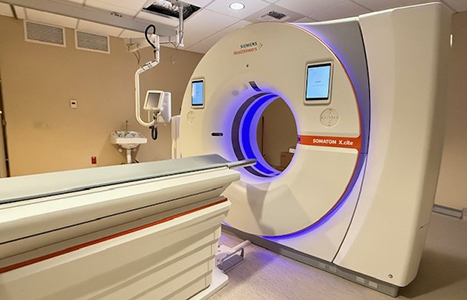Existing and Emerging Maintenance Issues Continue to Cost School District
At the Orcas Island School District (OISD) Board Meeting on March 3, Bond Specialist Trevor Carlson gave “eye-opening” and “sobering” information regarding Qualified School Construction Bonds (QSCBs), which the board had been considering as a match for several grants awarded the district to remedy energy and construction issues at school buildings.
The board by consensus agreed to bring figures to the next OISD Board meeting on March 31 that will help them decide how much non-voted debt to assume through regular bonds or QSCBs or through a loan from the state or other entity. (Any non voted debt that the district assumes, must be repaid through the school district’s general fund monies or with the proceeds of a future voted bond or levy).
Carlson, who is Senior Vice President for Seattle-Northwest Securities, walked the school board through the pros and cons of QSCBs, which the board had considered undertaking in the amount of $6 million. During the discussion, it became apparent that the school board had little taste for the $400, 000 to $473,000 annual payment they would be required to make on such a debt.
And Carlson indicated that bond issuers would be reluctant to underwrite debt of that amount without a guaranteed revenue source for the district to make those payments. In addition, the QSCBs require additional accounting services and staffing.
“Due to OISD lack of dedicated revenue source, you’ll be seen in investment community as higher risk and will incur extra interest above the qualified tax credit bond rate,” Carlson cautioned.
Some of the sobering considerations Carlson mentioned are:
1) permanence of the existing federal subsidy backing the QSCBs — “Laws can change”
2) greater complexity in managing QSCB funds requirements; i.e. records and record retention
3) debt service savings relative to other tools
4) repayment source
5) investor demand for non-voted debt
Carlson distributed information comparing the structures of QSCBs, discounted QSCBs and tax-exempt bonds. He suggested that the board may want to consider funding a smaller principal amount — “a lower amount changes [investors’] perception.” The board questioned Carlson as to what figure would make OISD bonds more attractive to investors.
The board also discussed what amount is needed to meet the match requirements of recently-awarded grants to repair and renovate school buildings – a state energy grant of almost $500,000, requiring a 3-to-1 match of about $1.5 million and a $900,000 commerce grant (which provides part of the required match for the state energy grant).
The board was told that staff at the state level and at the Department of Commerce are now working out the final numbers required to match the grants.
Carlson said that, if the district were to undertake non-voted bonds, it would need to make a final commitment in early June and come to terms before that. “The amount [of the bond] is more relevant than the timing,” Carlson said.
Board Member Tony Ghazel asked the “worst-case” question: “If we come to a year where we don’t have money to pay the debt, what happens?”
Carlson and board members agreed that lawsuits, state takeover of the district and forced budget reductions could be the result. Carlson also cautioned about “negative political ramifications down the line” if voters feel compelled to pass a bond in order to repay non-voted debt obligations.
Board member Scott Lancaster asked Carlson what was the motivation behind the QSCB bonds. Carlson said that the purpose was “to stimulate shovel-ready projects,” and gave as an example the Lake Washington School District that has existing voter authorization.
Superintendent Barbara Kline said, “These were some of the bonds we were thinking of using if the bond [votes of 2010] went through.”
Ghazel said, “The payment for $1.5 million for 15 years is $100K per year, can we sustain that kind of carve-out?”
Board member Scott Lancaster suggested, “It sounds better to borrow $500,000 from state for this loan match,” followed by another bond vote.
The board discussed $1,500,000 as the amount at which bond investors may support the district, and agreed to discuss the matter further at the next board meeting on March 31, when the grant figures, including match amounts, are definitive. The March 31 meeting will follow the “Getting to Yes” community meetings, to discuss school district maintenance and building needs.
Fred Klein, organizer of the “Getting to Yes” meetings, said that a diverse group of 35 community members has signed up for the series of meetings between March 19 and 26. He said that with a larger group, “we can get closer to diversity and more mass, gravitas in terms of the impact of this consensus would have on the community at large.”
The meetings can accommodate up to 60 participants. Klein told the School Board, “We want to work with the community to get a sense of direction on how to deal with these problems.”
He may be contacted at 376-5377 or by email at: fklein@orcasonline.com; (please use “schools” for subject line of email.)
Facilities Manager Report
David Johnson, OISD Facilities Manager, reported on the most recent maintenance issues. These included:
- Defunct fan motors on ventilators in middle school
- New lights in high school gymnasium in need of re-installation
- Roof repair of high school building
- Transformer to computer server room breakdown due to lack of ventilation and overuse
- Middle school roof repair
**If you are reading theOrcasonian for free, thank your fellow islanders. If you would like to support theOrcasonian CLICK HERE to set your modestly-priced, voluntary subscription. Otherwise, no worries; we’re happy to share with you.**







